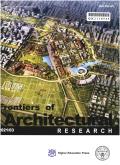乡土遗产为建筑过程中统一的基本原则
IF 3.6
1区 艺术学
0 ARCHITECTURE
引用次数: 0
摘要
如何从本土文化遗产中学习,并将其应用到当代建筑中,并不是最近才受到关注的问题。人们对流行建筑的崇拜可以追溯到现代主义运动的关键人物。此外,后来对现代性后果的批评立场与这个问题的联系更加密切,尽管很少有人注意到。Aldo van Eyck的配置纪律,Amos Rapoport的文化特定设计,John F. C. Turner对自我构建的倡导,Sergio Ferro的分离美学,以及Christopher Alexander的模式语言,似乎都在建筑过程中寻求一种统一性,这种统一性确实可以用传统的方式来验证。根据乡土遗产的价值,对他们的想法进行修订和比较,旨在确定影响环境创造的一般变量,并对其进行综合考虑,从而实现统一的基本原则。因此,文化、政治和物质秩序的集体倾向,或与情感、可居住性或经济相关的更多个人反应被提炼出来,以建立一个初步的概念框架。这一框架与该领域最近的调查结果和目前的趋势相一致,可能有助于确定今后可能采取的行动途径。本文章由计算机程序翻译,如有差异,请以英文原文为准。
Vernacular heritage for an underlying principle of unity in the architectural process
How to learn from vernacular heritage and apply its lessons to contemporary architecture is not a recent concern. Admiration towards popular buildings can be traced back to key figures of the Modern Movement. Furthermore, later critical stances on the consequences of modernity drew even a closer, though rarely noticed link to this question. Aldo van Eyck's Configurative Discipline, Amos Rapoport's culturally specific design, John F. C. Turner's advocacy for self-construction, Sergio Ferro's Aesthetics of Separation, and Christopher Alexander's Pattern Language, all seemed to seek a sense of unity in the architectural process that could, indeed, be verified in the traditional ways of doing. The revision and comparison of their ideas, in light of the values of vernacular heritage, aims to identify general variables that influence the creation of the environment and whose integral consideration could lead to that underlying principle of unity. As a result, collective predispositions of cultural, political, and material order, or more personal reactions related to emotion, habitability, or economy are distilled to build a preliminary conceptual framework. This framework is coherent with recent findings and current trends in the field and may serve to identify possible paths of action for the future.
求助全文
通过发布文献求助,成功后即可免费获取论文全文。
去求助
来源期刊

Frontiers of Architectural Research
ARCHITECTURE-
CiteScore
6.20
自引率
2.90%
发文量
430
审稿时长
30 weeks
期刊介绍:
Frontiers of Architectural Research is an international journal that publishes original research papers, review articles, and case studies to promote rapid communication and exchange among scholars, architects, and engineers. This journal introduces and reviews significant and pioneering achievements in the field of architecture research. Subject areas include the primary branches of architecture, such as architectural design and theory, architectural science and technology, urban planning, landscaping architecture, existing building renovation, and architectural heritage conservation. The journal encourages studies based on a rigorous scientific approach and state-of-the-art technology. All published papers reflect original research works and basic theories, models, computing, and design in architecture. High-quality papers addressing the social aspects of architecture are also welcome. This journal is strictly peer-reviewed and accepts only original manuscripts submitted in English.
 求助内容:
求助内容: 应助结果提醒方式:
应助结果提醒方式:


